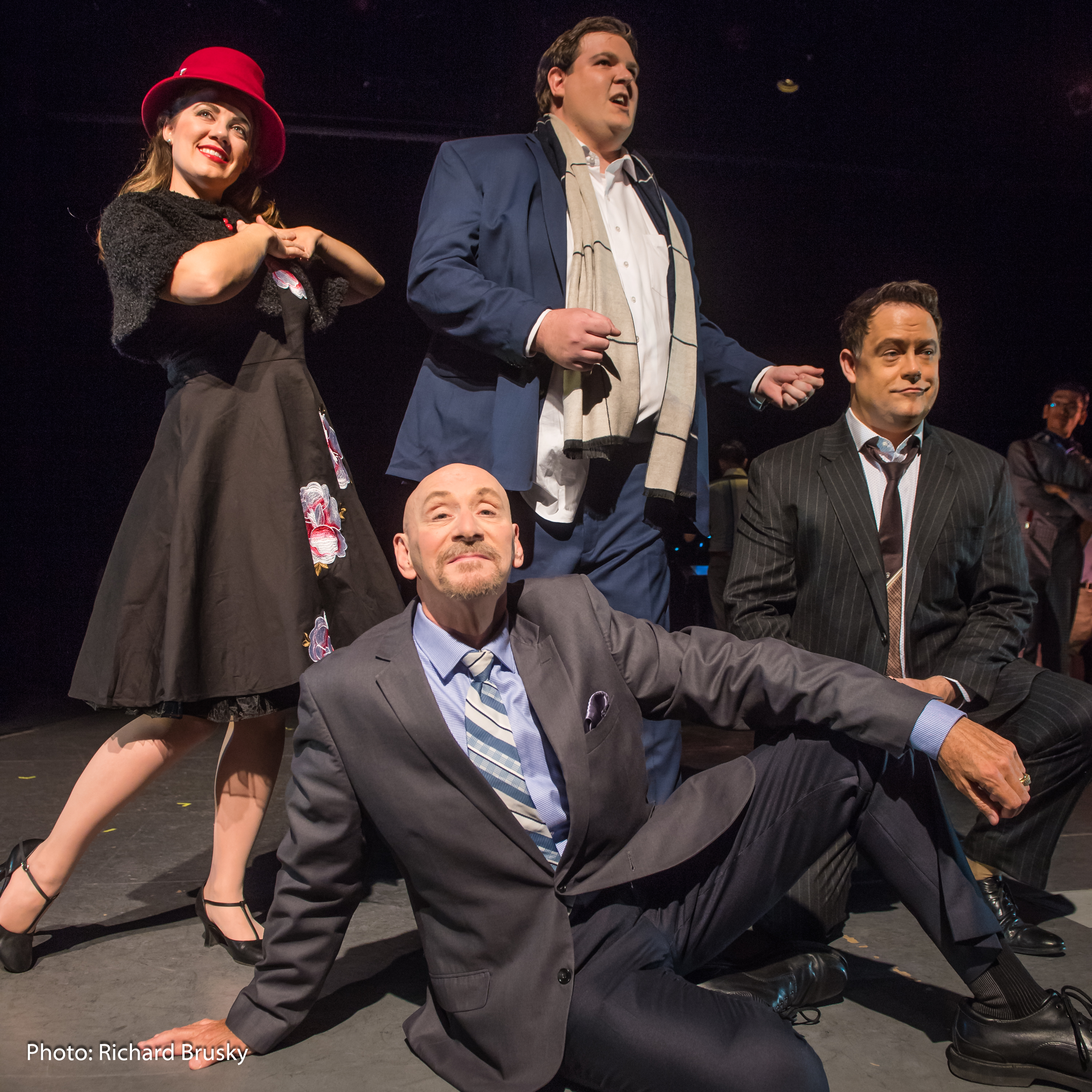SIN CITY OPERA CLOWNS AROUND
By: Hal de Becker
An updated version of Pagliacci (The Clowns), Leoncavallo’s ‘play within a play’ opera of betrayal and murder, was presented in English by Sin City Opera at Winchester Cultural Center.
In the original, the action takes place in 19TH century Italy. A company of traveling players perform a Commedia dell’arte comedy in which the troupe’ star Canio portrays the clown Pagliaccio and his real-life wife Nedda acts the part of the unfaithful Columbine.
Canio has just learned that Nedda, in real-life, is betraying him with a lover. The audience unaware of this is amused by his antics as the cuckold clown and subjects him to laughter and ridicule. This inflames Canio’s jealousy and during the play he murders both Nedda and her lover Silvio.
SCO placed the opera circa 1960 with a TV studio audience watching a live, modern- dress broadcast of the play.
As if love, hate, adultery and murder weren’t enough, SCO’s intention according to the program notes was for the opera to be viewed ‘from another angle’ with domestic violence, male privilege, current events and the nature of acting being among the themes explored. The only result, at least for me, was confusion.

Canio/Pagliaccio was portrayed by tenor William McCullough. His voice possessed power but lacked shading and wasn’t always reliable or well-modulated. Dramatically he was stiff, inexpressive and passionless.
As Nedda/Columbine Anna-Lisa Hackett (any relation to 1920’s tenor Charles Hackett?) sang beautifully and with increasingly pure tone as the performance progressed. Especially effective was the Stridono Lassu aria in which she envied the flight and freedom of birds.
Her acting was persuasive and appropriate. With her lover Silvio, she was appealingly coquettish vocally and in her movements and poses. But with the jealous and abusive Canio she was cold, mocking and fearful.
Andrew Gray delivered an excellent performance as Nedda’s rejected suitor Tonio and in the famed prologue aria persuasively reminded the audience that artists are human beings who feel real grief and pain - not only act it.
Gray’s voice was strong and controlled. His clear diction needed no projected titles. The role of the real-life Tonio called for crude passion and devious cunning while as Taddeo in the stage play he was awkward and foolish. Mr. Gray successfully projected every element.
His impressive acting was informed by a nuanced use of face and gesture. In one instance, after a humiliating confrontation with Nedda he has to walk past her. To avoid having to look at her he turned his head to the side and smoothed his hair with his hand.
Not every operatic artist is wise or skillful enough to incorporate natural body-language-moves into their interpretations. Gray was both.
As Harlequin, gifted John Hammel’s singing, mime and dancer-like moves captured the essence of Commedia dell’arte style.
Ian Gargantie as Silvio had a small, frequently thin voice and came across as too young and immature to convincingly portray the lover of a woman like Nedda.
The chorus sang well and with unity. Occasionally, a glorious soprano sound soared out from it but unfortunately I don’t know to whom it belonged.
A delightful trio of attractive young ladies sang and acted out corny sales pitches typical of 1960’s TV commercials (and of 2018’s, too). The routines were well crafted and executed, and very amusing.
Under the baton of Dean Balan SCO’s chamber orchestra using orchestrations by Michael Withers provided good support except for the brief Intermezzo when they never seemed to quite come together.
The production was directed by Skip Galla assisted by Rebecca Morris.


